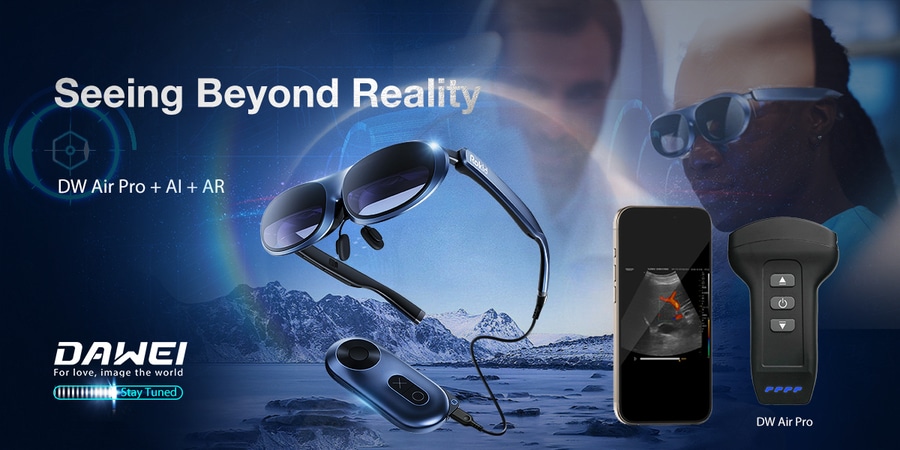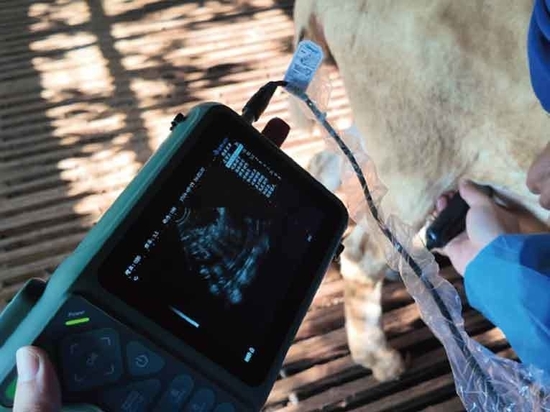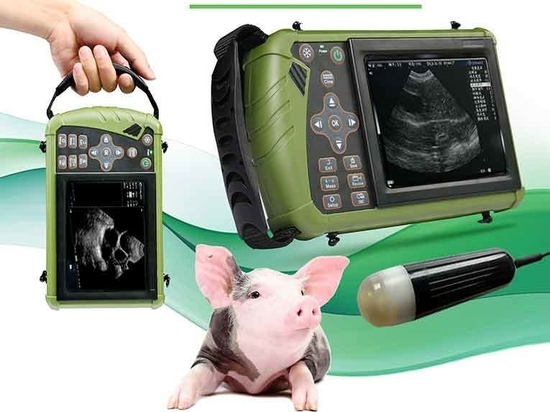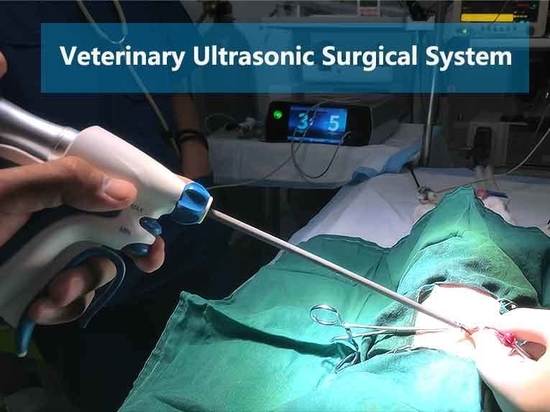
#Industry News
VR and wireless ultrasound fusion technology
current status and future trends
With the rapid development of technology, the combination of virtual reality (VR) technology and wireless ultrasound devices is leading to technological innovations in medicine and other fields. This convergence not only shows great potential in medical education and clinical applications, but also paves the way for more cross-border innovations in the future. In this paper, we will discuss the status quo, technical applications and future development trends of VR and wireless ultrasound, and look forward to witnessing the realization and popularization of this cutting-edge technology with you.
First, the technical background and integration advantages
1.1 The rise of virtual reality (VR) technology
VR technology realizes the simulation of real experience by creating a virtual environment and immersing the user in it. In recent years, VR has been widely used in the fields of education and training, simulated surgery, remote collaboration, etc., bringing users a new interactive experience.
1.2 Wireless ultrasound technology innovation
Wireless ultrasound equipment gets rid of the traditional wired constraints and provides higher portability and flexibility. It not only excels in rapid diagnosis, clinical examination and interventional operation, but also greatly improves operational efficiency and safety.
1.3 Advantages of integrating the two
Combining VR with wireless ultrasound technology can realize:
Immersive teaching and training: students through VR glasses to experience realistic clinical scenes, intuitive understanding of ultrasound principles and operational procedures;
Real-time interaction and feedback: wireless ultrasound probe to obtain instant images, and interactive operation in the virtual environment to improve the learning effect;
Remote diagnosis and collaboration: doctors can use the VR platform to remotely view the ultrasound data, to achieve cross-regional and cross-agency collaborative diagnosis and treatment.
Application Cases of Current Technology
2.1 Medical education and simulation training
Currently, there is a VR-based medical ultrasound experimental teaching system in use. The system integrates modules such as hospital roaming, equipment structure display, imaging principle demonstration, interactive examination, etc. Students can not only intuitively understand the principles of ultrasound imaging, but also simulate real clinical operations in the virtual environment. This model effectively solves the problems of insufficient opportunities for clinical practice and limited use of equipment in traditional teaching.
2.2 Clinical application and surgical assistance
In actual clinical operations, wireless ultrasound devices have been widely used in anesthesiology, emergency medicine and interventional therapy scenarios. For example, in anesthesiology, the use of wireless ultrasound for peripheral nerve block not only improves the success rate of the operation, but also shortens the onset time and reduces the use of local anesthetic and the risk of complications. Meanwhile, combined with VR technology, doctors can improve surgical precision and emergency response ability through simulation training before surgery.
2.3 Mobile Devices and Intelligent Diagnostics
Wireless ultrasound products on the market, such as EAGLEVIEW™, provide healthcare professionals with the flexibility to perform full-body scans by seamlessly connecting with smart terminals. These devices support multiple modes of switching from superficial to deep, making diagnosis more efficient and convenient. the introduction of the VR platform provides doctors with an intuitive, three-dimensional image observation platform, helping accurate diagnosis and personalized treatment.
Future Development Trends
3.1 Deep integration of artificial intelligence
In the future, VR and wireless ultrasound technology will be deeply integrated with artificial intelligence (AI), and the application of AI algorithms in image recognition, data analysis and intelligent diagnosis will further improve the speed and accuracy of image processing, and realize intelligent early warning and personalized treatment recommendations.
3.2 Cloud platform and remote collaboration
With the development of 5G and IoT technology, the VR ultrasound remote diagnosis system based on the cloud platform will be gradually popularized. Doctors can realize remote consultation and collaborative operation across geographical restrictions, providing strong support for the shortage of medical resources in remote areas.
3.3 Cross Innovation in Multiple Fields
In addition to the medical field, the integration of VR and wireless ultrasound technology will also play an important role in industrial inspection, scientific research experiments, virtual training and other fields. In the future, this cross-border integration will prompt various industries to realize intelligent transformation and promote the informatization process of the whole society.
Conclusion
The combination of VR and wireless ultrasound is bringing brand new possibilities for medical education, clinical operations, and multidisciplinary applications. Through immersive experience and efficient remote collaboration, this cutting-edge technology will continue to refresh people's perception of the traditional diagnosis and treatment and training mode. In the future, we believe this technology will usher in more breakthroughs and create more value for healthcare and related fields.
Stay tuned to DAWEI, the excitement is coming soon!
We are also about to launch a new convergence program, so stay tuned for more technical information and cutting-edge news, and together we will open a new chapter in the era of VR and wireless ultrasound.





